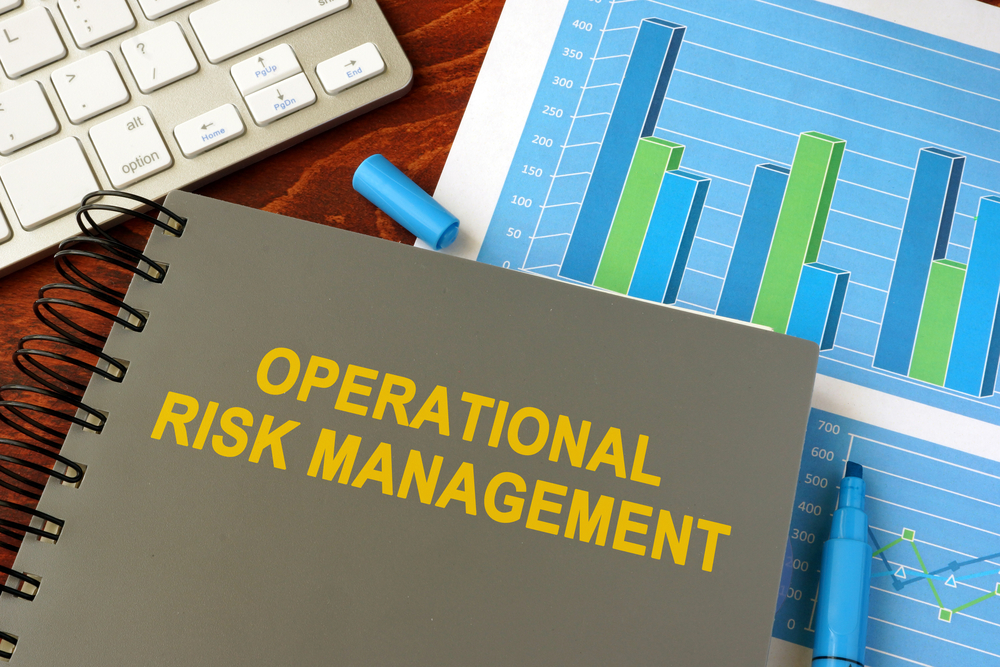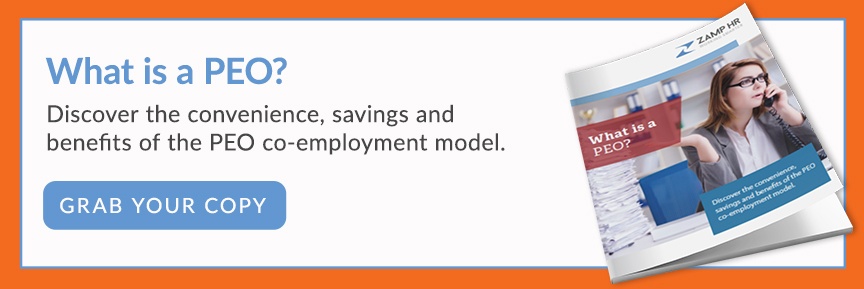Every business faces risk, but the kind which presents the most immediate threat is operational risk. This kind of risk disrupts the flow of your business operations, resulting in direct or indirect financial loss. Managing risk is challenging, and outsourcing your risk management allows you to benefit from higher levels of expertise at a more affordable price.
To outsource operational risk, you should look to a comprehensive outsourcing solution, of which the best is a Professional Employer Organization (PEO). It provides PEO risk management services which effectively minimize your operational risk.
What is Operational Risk?
Operational risk is the risk of loss that comes from failed or ineffective systems, people, internal processes, or external events.
Operational risk might include a poorly-trained employee annoying a prospective customer and costing a sale, a data breach, or a storm severe enough to disrupt your operations. For example, losing power for several hours due to a thunderstorm is an operational risk.
These disruptions can cause losses either directly due to lost sales or indirectly due to impacts on your reputation, employee morale, etc. Outsourcing risk management can help reduce all types of operational risk.
What are the Types of Operational Risks?
There are several types of operational risk, classified by the source of the risk. Each must be addressed differently.
People Risk
This is risk directly caused by people’s actions (or inactions). Typically, this refers to internal risks. In other words, “people risk” boils down to the risk of loss caused by your employees.
This might range from a data entry error that causes a compliance problem to a workplace accident caused by human error. People risk does not imply that your employees are incompetent, only human and imperfect.
Process Risk
This is the risk caused by failed or inefficient internal business processes. This ranges from design flaws, to new product failures, to inefficient sales processes, causing a lack of communication that can cost a lead.
All internal processes carry risk, and some of it can only be mitigated so much. Every company engaged in R&D, for example, will at some point experience a product failure. However, efficient processes can help.
Systems Risk
This is the risk caused by failed or inefficient systems. This is things like information technology, power backup systems (such as the generator that should kick in during the lightning storm), connectivity between offices, etc.
Systems risk increases when people work from home and is often experienced as losses due to IT failures, including data breaches.
External Events Risk
The key to when something is an external event is when it is beyond your control. Hurricanes and wildfires are external events, as are pandemics. So is war, arson, or even an accident that delays one of your supply trucks and has a cascading impact on production.
Legal and Compliance Risk
Compliance risk often ties into people risk; most compliance issues are caused by human error or lack of knowledge and training. This includes a lack of compliance with HR laws, tax laws, and other regulations.
How do PEOs Lower Operational Risk?
Operational risk is complex and covers a variety of factors, many of which interplay. For example, working from home can increase both systems risk and people risk, but not letting people work from home brings a different risk: losing key employees. Risk management services can help you balance and mitigate all of these risks.
PEOs work to lower occupational risk in several ways:
Safety Training and Audits
A significant component of people risk is workplace accidents and injuries. A single accident can cost you both directly and indirectly; it can cause downtime and reduced productivity, lower worker morale, and raise your workers’ comp premiums the following year.
PEOs can help by providing quality safety training, especially to newer companies. Because the PEO has experience and knowledge from working with multiple clients, they can design a safety training system for you and run safety audits to help you determine where the gaps are, reducing the risk of accidents.
Workers Compensation Administration
One advantage of going with a PEO over other HR outsourcing types is that they can help with workers’ comp costs. In addition to getting you a lower experience modifier, they can help reduce costs and keep down premiums by blocking invalid claims from proceeding and codifying your claims management program.
They can also help you design a return-to-work program that will limit the size of your claims by getting injured or sick employees back on the job faster. This also improves morale and reduces the risk of the person quitting.
Unemployment Insurance Administration
Your PEO can also take over the administration of unemployment insurance. This helps reduce people risk in the form of fraud prevention, process risk in the form of supporting claims and managing court cases, and even system risk in the form of helping you address your turnover issues.
By letting your PEO handle this, also, you free up HR to look for other ways risk can be mitigated.
Total HR Compliance
Finally, a PEO can handle all HR compliance issues with you. They can ensure that you are always fully compliant with laws such as the Family & Medical Leave Act, Fair Labor Standards Act, OSH Act, and other regulations.
By ensuring compliance, they reduce your legal risk. You are less likely to be fined and much less likely to be sued by a former employee. If somebody does sue you, they are less likely to win.
Why Outsource Risk Management to a PEO?
Outsourcing risk management to a PEO provides the best possible ROI. The cost savings and ROI of using a PEO beat any other HR outsourcing options. PEOs offer the best way to free up the time of your HR team to handle more complicated matters such as improving company culture (which also reduces operational risk).
Outsourcing to a PEO can help reduce legal and compliance risk by ensuring compliance, systematic risk by helping you address turnover, process risk by improving workers’ comp and unemployment insurance administration, and people risk through all of these as well as providing high-quality safety training.



